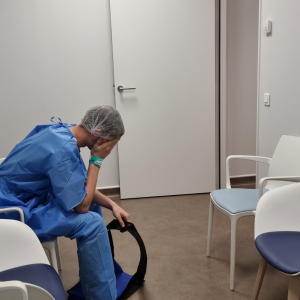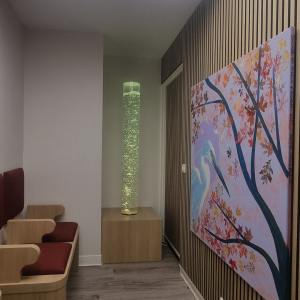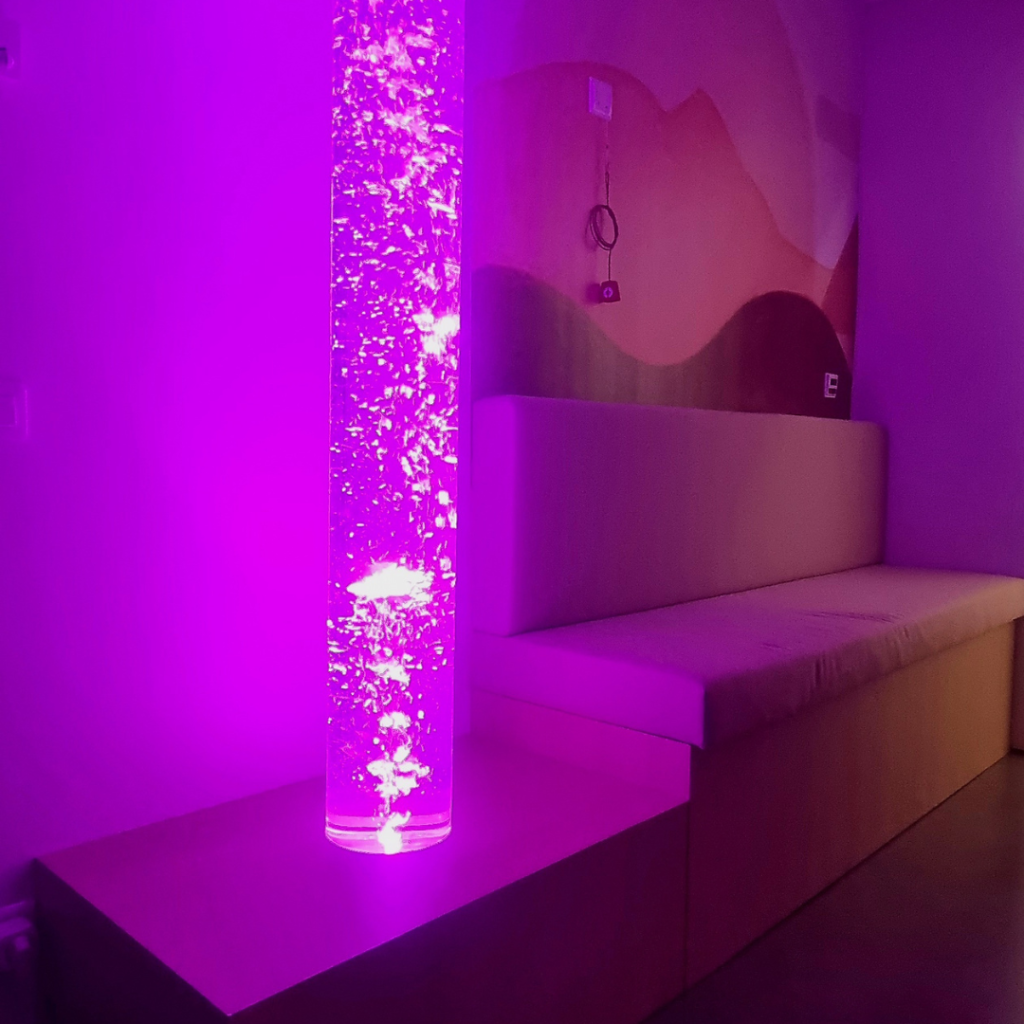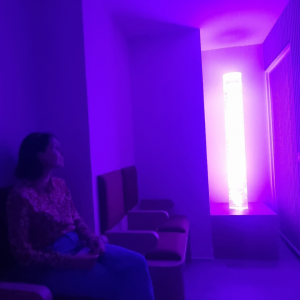Bibiana Escribano
Occupational Therapist. Specialist in pshycomotricity, music therapy and sensory integration.
Read more postsAt Hôpital Privé du Confluent in Nantes, France, multisensory rooms have been incorporated to enhance the patient experience.
Waiting before surgery is a delicate moment. People arrive with a mix of emotions: fear, anxiety, nervousness, fatigue… and in some cases, also pain. Added to this are uncertainty, uncomfortable silence, and incessant thoughts. Emotions are heightened, and the body responds with tension. All this discomfort negatively impacts how the process is experienced.
In this context, the environment can have a significant impact. If the space is cold, impersonal, or noisy, as often happens in hospitals, the discomfort intensifies, and the wait becomes even more difficult.
Faced with this scenario, many hospitals are seeking new ways to emotionally support patients and make this moment more bearable. A great ally to achieve this can be the environment, particularly a multisensory environment designed with therapeutic intent and emotional care.
This is the case at Hôpital Privé du Confluent in Nantes, France, which transformed two of its outpatient surgery waiting rooms into multisensory environments.
The project, developed in collaboration with our partner ArchiZenco, had a clear goal: to turn these spaces into multisensory environments that help reduce anxiety, create a sense of calm, and improve the emotional well-being of patients before a surgical procedure.

In this way, the environment supports the patient and surrounds them with a pleasant atmosphere, rather than adding more stress—helping each person prepare emotionally for what’s ahead. It’s not the same to wait in an impersonal, distant space as it is to wait in one that embraces you, invites you to breathe, and reconnect with yourself.
To achieve this, the Nantes hospital integrated our multisensory technology to transform these areas into sensory regulation experiences—creating an environment that cares, calms, and accompanies patients during one of the most delicate moments of their hospital journey.
At the Hôpital Privé du Confluent, the aim was to ease the emotional load and offer a more gentle, human-centered experience. To do so, the hospital redesigned its preoperative waiting rooms in the following ways:

Hospital waiting room – Before the ArchiZenco and Qinera project

Hospital waiting room – After the ArchiZenco and Qinera project
With Qinera’s bubble tubes, it’s possible to create environments where light, vibration, reflection, and interactivity open up a world of possibilities. They stimulate visual tracking, play, and mindfulness. And above all, they allow the person to connect with something simple, repetitive, and deeply calming.
In the hospital’s waiting room, the tube becomes an anchor point. One bubble rises. Another falls. The tube vibrates gently. A soft melody whispers. Attention, previously caught in fear or anxiety, shifts toward a calm, steady stimulus. A comforting space opens up—one that quiets the mind and brings a sense of peace.

Qinera’s multisensory environments are spaces where light, sound, vibration, and other stimuli are harmoniously combined to create controlled sensory experiences. Designed to be physically and cognitively accessible and pleasant, these spaces invite people to reconnect with themselves, regulate their emotions, and positively engage their senses.
Multisensory rooms can serve a wide range of purposes: therapeutic, educational, developmental, recreational, or simply for overall well-being. Thanks to versatile elements like bubble tubes, fiber optics, image projections, or immersive music, it’s possible to create environments tailored to each person, each moment, and each specific need.
In hospitals, a multisensory room might be used in:
This project in Nantes reflects how, through a combination of design and technology, it’s possible to transform cold medical environments into more human places. Because small stimuli, like a warm light, a moving bubble, or a soft melody, can have a profound impact on how a person experiences that waiting moment or any other sensitive situation within a hospital.
how a person experiences that waiting moment or any other sensitive situation within a hospital.
More and more hospitals are beginning to transform their spaces and incorporate emotional well-being as an essential part of care.
💜 Thanks to our partner in France for continuing to bring multisensory technology to the spaces where it’s most needed.
If you want to learn more about the benefits of Multisensory Environments or see how you could adapt it to your space, therapeutic goals, and users, you can send an email to hello@qinera.com.
Occupational Therapist. Specialist in pshycomotricity, music therapy and sensory integration.
Read more posts